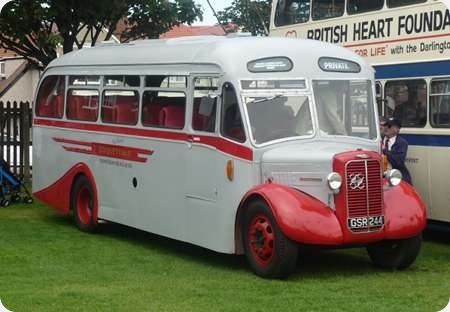Blackburn Corporation – Leyland Titan – PCB 25 – 25
Blackburn Corporation – Blackburn Borough Transport
1962
Leyland Titan PD2A/24
East Lancs H35/28R
The local government reorganisation of 1974 resulted in the merger of the municipal fleets of Blackburn and Darwen. The initial livery was a compromise, using Darwen’s red and Blackburn’s green, although the shades of these colours were rather brighter than those previously used. The combined undertaking was titled "Blackburn Borough Transport", the word "Corporation" ceased to be used at this time (at least for bus fleets) except in Douglas The main subject of this picture is 25 (PCB 25) a Leyland Titan PD2A/24 with East Lancs H35/28R bodywork, one of twelve delivered to Blackburn Corporation in 1962; a further twelve identical vehicles followed in 1964. These followed batches of Guy Arab IV’s, and I’m sure the drivers will have appreciated the semi-automatic gearboxes on these Titans. Other vehicles of both Blackburn and Ribble can be seen, including the rear of an Atlantean in the previous Blackburn livery. After a few years a version of the latter livery was applied to the whole fleet.
The photograph was taken at The Boulevard bus terminus, which was right outside Blackburn Railway Station. This terminus served the town well until recently, but at the time of writing this area is a building site, with temporary traffic lights causing delays to buses entering or leaving the town from the south. A new bus station is under construction near to the market hall, and a temporary bus station has been built nearby. Nowadays the former municipal services are operated by Transdev Lancashire United, which revives a once proud name, although not in it’s original operating area.
Photograph and Copy contributed by Don McKeown
11/09/14 – 077:00
Don, there was another exception – Barrow-in-Furness Corporation Transport. Buses proudly carried the fleet name ‘Barrow Corporation’ well into the 1980s. They retained their smart cream and dark blue livery and a coat of arms too. Nice picture with plenty of background interest which captures the era well.
Mike Morton
13/09/14 – 06:35
The semi-automatic PD2 (as opposed to PD3) was a pretty rare vehicle really. And I don’t recall the centrifugal clutches rattling on these PD2s the way they did on Ribble, Wigan, Preston etc PD3s when idling.
Michael Keeley
14/09/14 – 07:26
There were indeed more semi-automatic PD3s built for UK operators than semi-automatic PD2s, but not all that many more.
I can think of 391 PD2s, whereas the total for PD3s was, I think, about 580. The main customer for two-pedal PD2s was Glasgow Corporation Transport, which took 325. Others operators which spring to mind are Blackburn (24), Leeds (20), Huddersfield (6), Manchester (6), Swindon (5), King Alfred (2), Ramsbottom (1), Walsall (1), Demonstrator (1).
Taking Glasgow out of the equation gives 66 PD2s and about 440 PD3s, so, outside Glasgow, two-pedal PD2s were indeed relatively rare. There’s no way a centrifugal clutch couldn’t rattle, so if the Blackburn PD2A/24s didn’t rattle then there’s no way they could have been centrifugal clutch, they must have been fluid flywheel, which is what I would have said they were anyway.
Of the Ribble two-pedal PD3s, only 1706-1800 were centrifugal clutch, the final batch (1815-50) being fluid flywheel.
All two-pedal Preston PD3s were centrifugal clutch, but they only took the one batch (of seven), choosing manual transmissions for all subsequent PD3s.
I never seriously encountered the Wigan PD3s, sorry.
David Call
16/09/14 – 07:52
Never realised Glasgow had so many, their half-cabs were long gone by the first time I visited that city. Come to think of it, it was only the Ribble 1700s that rattled. The Wigans rattled with a vengeance as evidenced by the video of HEK 705 on Youtube. Some early Atlanteans had centrifugal clutches I believe, but had them quickly replaced by fluid flywheels, what did they sound like I wonder.
Michael Keeley
13/08/20 – 10:26
Brighton buses also proclaimed "Brighton Corporation" well into the eighties.
Eddie Leslie
Quick links to the - Comments Page - Contact Page - Home Page



